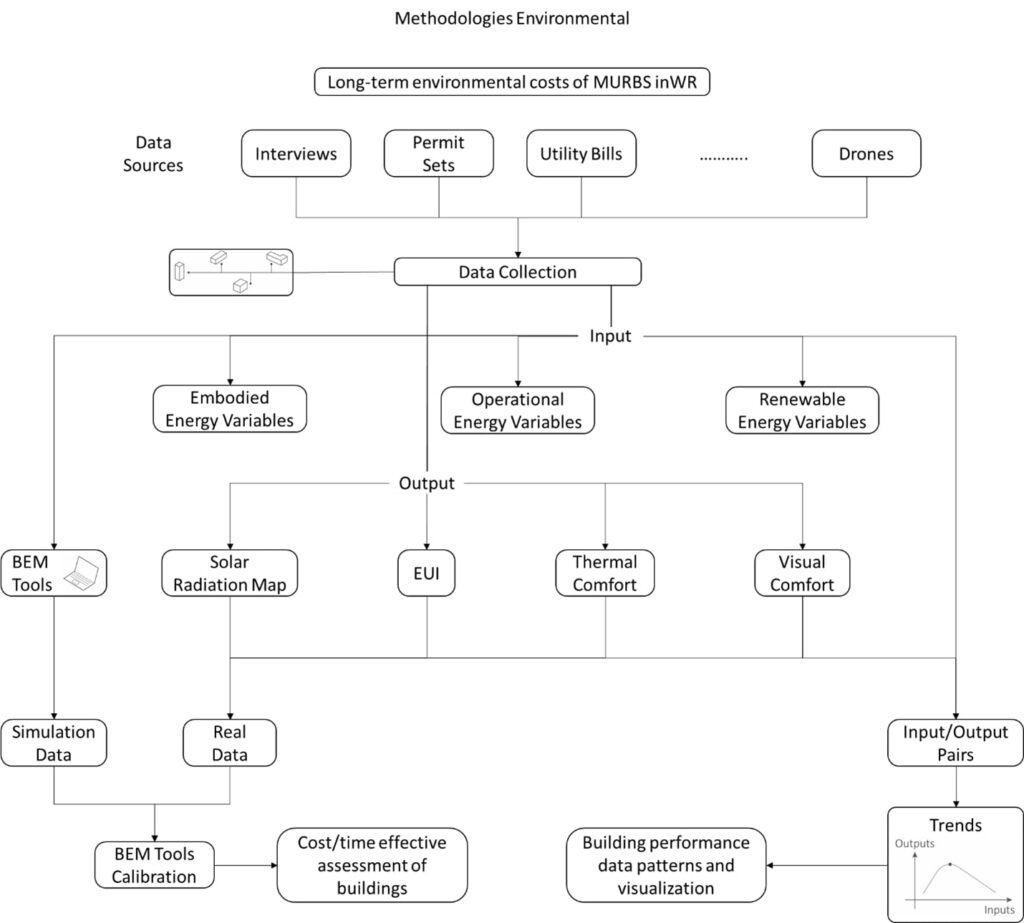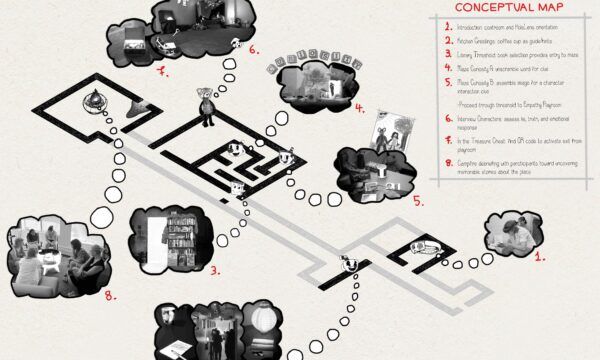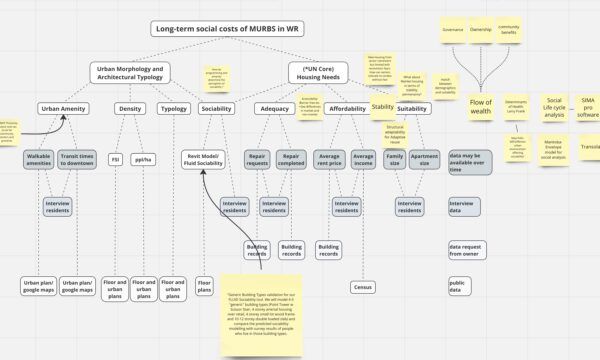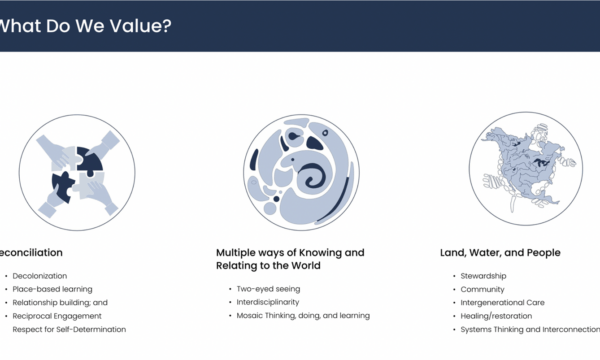On August 9th, researchers at the University of Waterloo had a brainstorming session. The session included representatives from all branches of the research team: academics interested in the social and environmental costs of MURBs, student researchers, citizen group representatives, industry experts, and municipal and city employees from the Waterloo Region.
The session outcomes included multiple methodologies to investigate energy efficiency and comfort in residential buildings within the Waterloo Region. Data will be collected to include different aspects of building energy use and comfort. Input data will include embodied and operational energy variables while output data will cover energy metrics and comfort factors. The research will assess energy performance gaps by comparing real, simulated, and projected data, in addition to examining building performance trends and visualization methods. Overall, the research aims to enhance building energy modeling and assess the cost-effectiveness and climate resilience of residential buildings in the Waterloo Region.
Construction material performance over the life cycle of the building is integrated into the environmental cost of construction. Data will be collected from the case studies within our Region to assess what materials were used, their maintenance and operational performance, as well as their life cycle implications on the greater environment. Multiple links were discussed between the environmental performance of a building over time, and the adequacy of the residential units. One major predicted overlap is the primary structural system’s adaptability to major renovations such as the changing of unit sizes or layout to keep pace with local social needs. This branch of the research aims to identify material choices and arrangements for MURBs which create improved environmental quality for users over the entire lifetime of the building without hindering social performance.
To learn more about the research site led by Waterloo University in Waterloo, click here.




